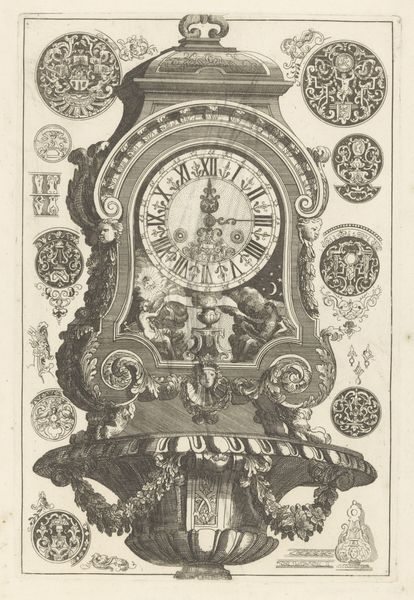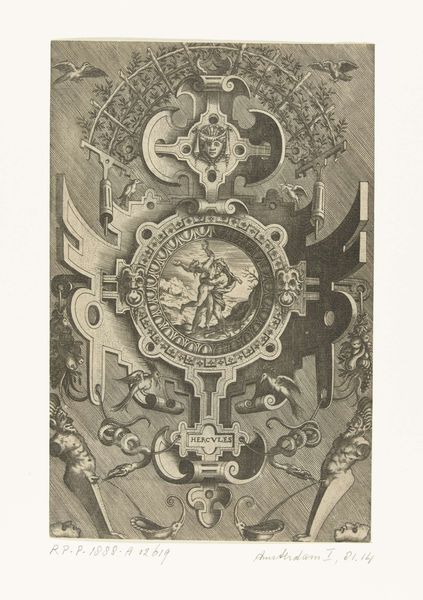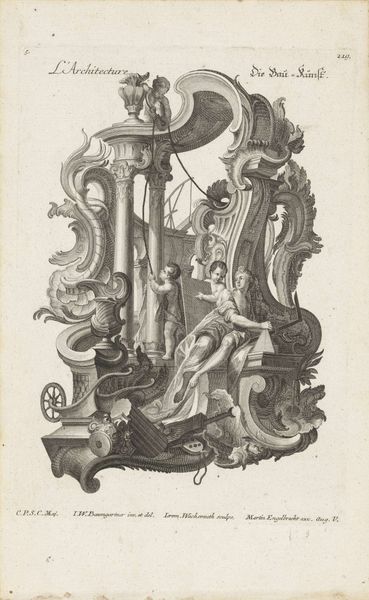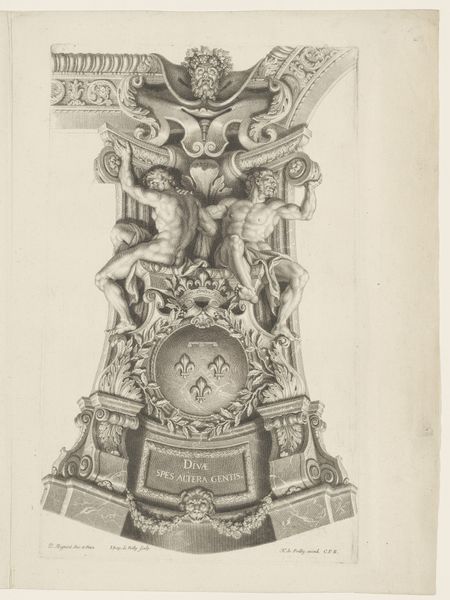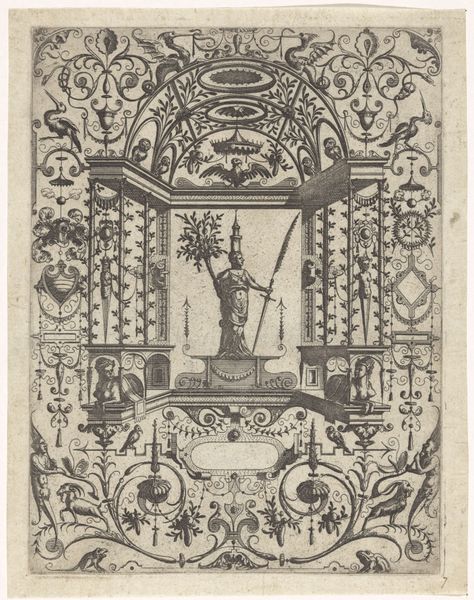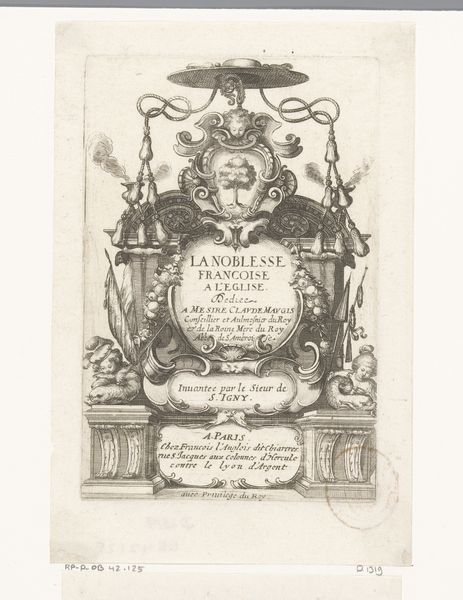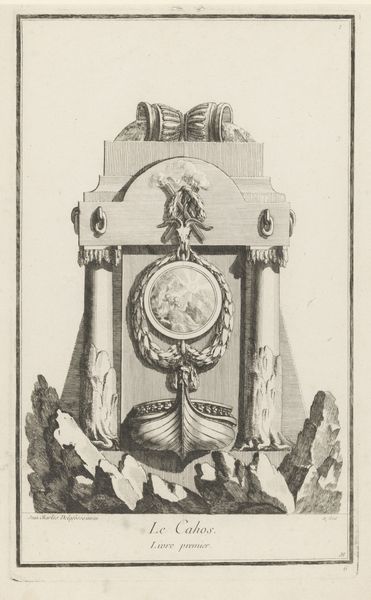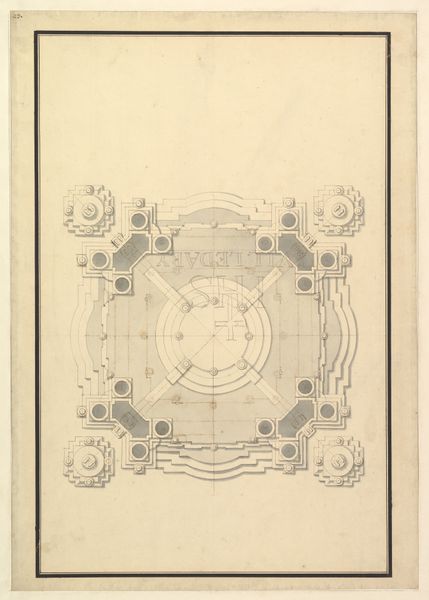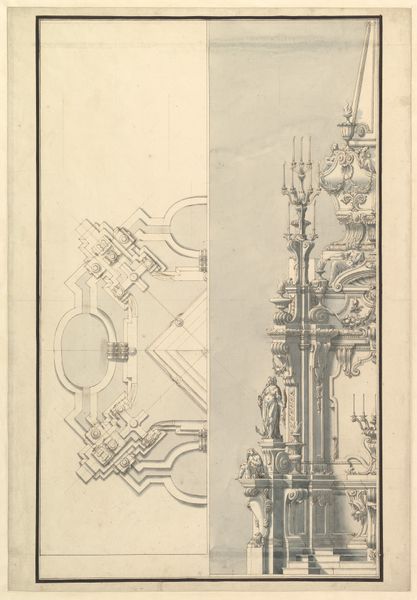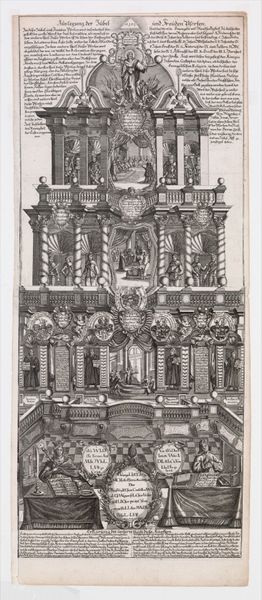
print, engraving
#
allegory
# print
#
mannerism
#
figuration
#
line
#
history-painting
#
engraving
Dimensions: height 530 mm, width 357 mm
Copyright: Rijks Museum: Open Domain
Curator: This intriguing print before us is titled "The Triumph of Death," created in 1588 by Andrea Andreani. It’s an engraving, a stark representation of death's omnipresence, currently housed here at the Rijksmuseum. Editor: Right, my initial vibe? Simultaneously morbid and decorative. The level of detail almost domesticates death. I feel like it's a really elaborate, if terrifying, wallpaper design. What is going on here? Curator: It's a prime example of Mannerist allegory, where the theme is the futility of earthly life. Observe how Death, personified by skeletons and decaying figures, permeates every layer of the composition. Editor: I see it! Skeletons flanking either side like some sort of macabre honor guard, while up top, they seem to be partying atop some skulls. It's a celebration! Who knew death had such a festive side? Is that what all the symbols mean, a danse macabre, celebrating destruction and rebirth? Curator: In a way, yes. The wheel in the center visualizes the cyclical nature of life and death. The scenes depicted on its outer ring illustrate the diverse ways Death intrudes into human affairs regardless of age, class, or creed. Editor: A sort of wheel of misfortune, elegantly illustrated, naturally. All the while the composition’s classical motifs serve to underscore this morbid dance in almost decorative and celebratory ways, rather than being some form of bleak judgement. Curator: The engraving uses line work to create this visual richness, emphasizing both the beauty and horror inherent in the subject. Consider, too, that works like these often served as "memento mori", a visual reminder of mortality, encouraging viewers to reflect on their lives. Editor: And somehow, paradoxically, celebrating it? Maybe because staring directly into that void is both terrifying and strangely exhilarating. We build these elaborate symbols and structures to remind us both that death exists and is present but can also, in a weird way, also distance us from it. This image speaks both directly and subtly, it's a mind warp. Curator: Indeed. By representing Death with such artistic and symbolic density, Andreani perhaps aimed to prompt thoughtful contemplation about life’s brevity, while creating lasting work about something timeless. Editor: Yes, maybe there is beauty to be found in decay. I mean, think of how rich soil is full of compost, like a garden’s circle of life, in miniature. Anyway, I never thought staring at a detailed vision of death would make me want to… go touch some plants.
Comments
No comments
Be the first to comment and join the conversation on the ultimate creative platform.
